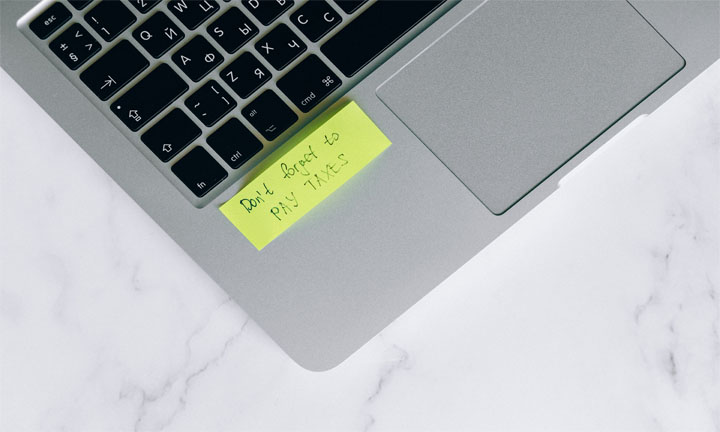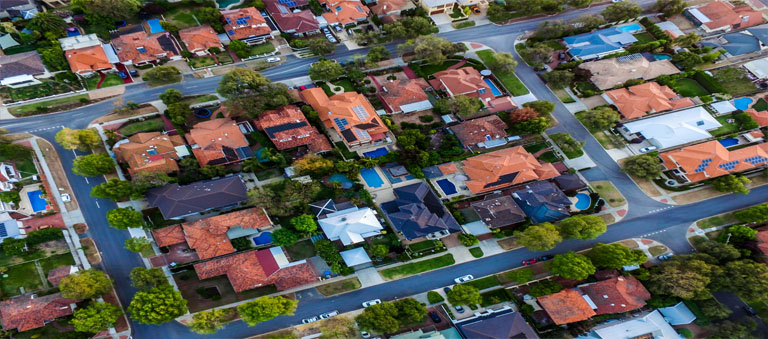Category: Newsletters
Car Loans – In your Business or Personal Name?

Whether you put a car in your business or personal name depends on what percentage of vehicle use is business or personal. The more often a vehicle will be used for business, the more likely this will be the best name on the car registration. Or, if you only occasionally use a vehicle for business, then it might be financially prudent to put a car in your personal name.
Personal Name
Bought personally and used for business, you will be able to claim the business portion of vehicle use via your tax return or be reimbursed by your company. To claim the business portion, you must record your vehicle use in a logbook or use the cents-per-kilometre deduction method.
The logbook method can deliver a good tax outcome, so long as you maintain a logbook for a minimum of 12 weeks. Record trip date, starting and finishing odometer readings, total kilometres travelled and the purpose of a trip. Usually, you will only need to do this once every five years. You could consider an app for your phone to make it easier for you on-the-go.
Alternatively, you could claim in your tax return up to 5,000 kilometres by calculating the number of kilometres you travelled doing business and multiply this figure by $0.72 (ATO Mileage Rate for FY21).
For example, 4,171 kms x 0.72 = $3,003.12 added to your tax deductions in your tax return.
Business Name
If a vehicle is used entirely or almost exclusively for business, then having put a car in your business name, all operating costs are claimable including but not limited to registration, insurance, servicing, repairing and car washing.
However, any private use of the vehicle will require a record to avoid Fringe Benefits Tax (FBT). If a logbook is not created, then the deemed private use amount of a vehicle will be equal to 20 per cent of the full purchase price of the vehicle.
Generally, when a vehicle’s deemed private use amount is greater than any total deductible costs, it would best not to be in a business name. Before purchasing, you might well consider the price of any company-bought vehicle and its intended percentage of business versus private use.
When you need a car loan, YML Finance can run these calculations for you.
How can YML help?
Talk to our YML Finance Team today to see how YML Group can assist you with your car loan. For more for more information, view our website and contact us on (02) 8383 4466 or by using our Contact Us page on our website.
Australian Taxes Payable as a Foreign Resident

Australian taxes are paid by all Australian residents, including those who work and live temporarily outside of Australia. Known as foreign residents, these foreign resident Australians must consider their incomes and assets, including land holdings, when preparing their annual tax returns for the Australian Taxation Office (ATO).
As a foreign resident for taxation purposes, you must declare income earned in Australia from employment, rental property, as well as any pensions and capital gains made on Australian assets.
As a foreign resident you will not need to declare any interest, dividends and royalties you acquire from your Australian assets, so long as the Australian source, company or organisation, has accurately and properly withheld tax on your behalf. Importantly, updating the ATO and all Australian companies and financial institutions with whom you have assets will ensure that tax deductions are calculated correctly and timely applied.
There are some aspects of Australia’s taxation laws that affect only foreign residents, including no tax-free threshold on income earned, no Medicare levy payment for the days worked and lived overseas, and capital gains implications and land tax surcharges, all determined upon your individual financial circumstances.
Capital Gains Tax (CGT) – Property*
If you sell a residential property or land located in Australia whilst you work and live overseas, you will be liable to pay capital gains tax (CGT) on the difference between the purchase and sale prices. When a foreign resident sells a property, you must pay CGT unless a variation application is approved that could reduce the CGT to nil. Does this variation apply to you?
The ATO states that the sale of a property after 1 July 2020 will no longer be exempt from CGT unless specified life events occur “within a continuous period of six years of [an] individual becoming a foreign resident”. These life events include a foreign resident, their spouse or their child having a terminal medical condition or dying or a foreign resident divorces or their relationship formally ends.
Land Tax Surcharge NSW – Property*
A land tax surcharge is payable in NSW by foreign residents who own residential property or land located in NSW. This land tax surcharge is payable in addition to any land tax generally levied upon NSW residential property. Is this surcharge applicable to your NSW property ownership?
All NSW residential property owned on 31 December each year is subject to payment of a surcharge on the taxable value of the land and foreign residents must pay a land tax surcharge of 0.75 per cent of the taxable value of their land, regardless of whether their property is exempt from general land tax.
*Our professional accountants at YML Group have expertise in taxation laws and regulations to help you assess and determine what taxes pertain to your income and property in Australia and NSW whilst you are a foreign resident.
How can YML help?
Talk to our YML Chartered Accountants Team today to see how YML Group can assist you with foreign resident taxation. For more information, view our website and contact us on (02) 8383 4400 or by using our Contact Us page on our website.
Australia’s Federal Budget 2021-22 – What’s new and what’s in it for you?
The Australian Government’s 2021-22 Federal Budget is based on numerous assumptions: a vaccinated Australian population, state borders remaining open, mitigation of COVID-19 outbreaks and a restrained, calculated reopening of Australia’s international border.Treasurer Josh Frydenberg stated in Parliament last night, “Mr Speaker, this pandemic is not over”. The Government’s priority is to keep Australia and its inhabitants safe from COVID-19, thus the Treasurer began early with the announcement of an injection of $1.9 billion for the vaccine rollout and $1.5 billion for COVID-19-related health costs.
Generally, the Budget extends many existing schemes and policies, expanding some with additional funds to create further stimulus and maintain momentum of Australia’s economic recovery. Job recovery support, training support and tax relief are key areas of focus for the Government and these, along with Australia’s financial status and this Budge’s incentives for Australians, are explained.
Australia’s Economy
Australia’s Treasurer, Josh Frydenberg, has revealed a lower-than-expected deficit of $161 billion in 2020-21, revised down by $52.7 billion. He announced a deficit fall to $57 billion by 2024-25. Australia’s deficit remains a ‘structural’ one for the foreseeable future.
Australia’s gross debt is expected to be 40.2% of GDP ($829 billion) this year and then stabilise at around 51% of GDP in the medium term, whilst Australia’s net debt will increase to 30% of GDP ($617.5 billion) this year and then peak at nearly 41% of GDP in 2024-25.
Although debt levels are high, the Treasurer spoke of the economy rebounding effectively from the depths of last year’s pandemic-related ‘recession’.
Unemployment remains above 5 per cent this year but is lower than the previously predicted 8 per cent or more. By 2022-23 unemployment is anticipated to be at a rate of 4.75 per cent.
International Borders
The Government will begin a measured approach to reopening Australia’s international border by mid-2022 with limited and gradual inbound and outbound flows.
TAXATION – BUSINESS
Extension – Capital Asset Investment Deductions & Carry-back Company Losses
The Treasurer announced the extension of two business tax incentives to help businesses that invest in their future. These two schemes will lift productivity and employment, leading to a boost in GDP, over the short to medium term and together they will deliver an additional $20.7 billion in tax relief over the next three to four years.
Under the Capital Asset Investment Deductions Scheme, businesses with less than $5 billion in turnover who invest in their future, may fully expense new depreciable assets – uncapped purchase cost – and the cost of improvements to existing eligible assets in the first year of use – acquisition of eligible capital assets from 7:30pm AEDT on 6 October 2020 and first used or installed by 30 June 2023.
The full expensing of capital asset investment will generate tax losses for some companies. Therefore, for eligible companies with less than $5 billion in turnover, losses may be applied against taxed profits in a previous year, thereby generating a refundable tax offset in the year in which a loss is made. The Carry-back Company Losses Scheme has been extended for another year to include losses up until 30 June 2023.
NEW – Tax Incentives for Innovation
To encourage investment in Australian medical and biotech technologies, on 1 July 2022 the Government will introduce a ‘patent box’ – to keep patents in Australia – that will reduce taxes – to a 17% concessional rate – on income from innovative research undertaken in Australia. This incentive complements the previously announced (Budget 2020-21) Research and Development Tax Incentive (due to be reviewed by the end of 2021).
To encourage Australia’s digital games industry and foster its growth, the Government will introduce a 30 per cent refundable tax offset – capped at $20 million a year – to digital game developers for eligible Australian games expenditure.
TAXATION – INDIVIDUALS
Extension – LMITO
The Treasurer announced an injection of $7.8 billion to continue the tax cuts for 10.2 million low- to middle-income earners. This extension of the LMITO (Low and Middle Income Tax Offset) will mean a tax reduction of up to a maximum of $1,080 for individuals with a taxable income of between $48,000 and $90,000 during the 2021-22 financial year. Couples will receive a tax reduction of up to a maximum of $2,160.
| Taxable Income Amount | LMITO |
| $37,000 or less | $255 |
| > $37,000 but < $48,000 | $255 plus 7.5% of the amount > $37,000 |
| > $48,000 but < $90,000 | $1,080 |
| > $90,000 but < $126,000 | $1,080 minus 3% of the amount > $90,000 |
This table shows Current Tax Thresholds for Individuals in Australia:
| Tax Thresholds | ||
| Tax Rate | Current | From 1 July 2020 |
| 0% | $0 - $18,200 | $0 - $18,200 |
| 19% | $18,201 - $37,000 | $18,201 - $45,000 |
| 32.5% | $37,001 - $90,000 | $45,001 - $120,000 |
| 37% | $90,001 - $180,000 | $120,001 - $180,000 |
| 45% | >$180,000 | >$180,000 |
| LITO | Up to $445 | Up to $700 |
INCENTIVES FOR SENIORS
Superannuation
From 1 July 2021 Australians over the age of 60 years – previously 65 years – will be able to make a one-off, post-tax contribution to their superannuation fund. This contribution may be up to $300,000 for one person or up to $600,000 for a couple and may be made only upon the sale of their home.
The purpose of this new policy is to encourage older Australians to “consider downsizing… freeing up the stock of larger homes for younger families” (Treasurer Josh Frydenberg).
Pension Loan Scheme
For those retirees not wanting to sell their home and downsize but who do want to improve their retirement income, the Pension Loan Scheme has been changed in this Budget to enable lump-sum cash payments from superannuation funds to eligible retirees.
By borrowing against their homes, retirees can receive a cash lump sum up to $12,385 for singles and up to $18,670 for couples with the loan payable upon the eventual sale of their homes.
The Government intends to encourage uptake of this scheme by spending $21.2 million, partly on targeted communication.
UNDERWRITING HOME OWNERSHIP
Extensions – Home Ownership Schemes
A temporary extension and expansion of the First Home Loan Deposit Scheme will see an additional 10,000 New Home Guarantees in 2021-22, available from 1 July 2021 and enabling eligible buyers to purchase a home for a minimum of 5% deposit without mortgage insurance.
The First Home Super Saver Scheme has also been expanded to enable eligible first home buyers to access up to $50,000 – an increase from $30,000 – of their tax-free superannuation contributions to boost their deposits.
NEW – Home Ownership Scheme
The Australian Government’s new Family Home Guarantee Scheme will provide financial assistance in the form of a deposit guarantee to a select 10,000 new home buyers over four years – specifically, eligible single parents with dependent children – of 18% of the purchase price of a home, leaving the home buyer to purchase a home with a 2% deposit.
JOBS AND TRAINING
Extension – JobTrainer and Boosting Apprenticeship Commencements
To help the economy prosper post-COVID-19, JobTrainer, the Government’s investment in skills of young people and job seekers, providing 450,000 free and low-fee training places (in fields of skills shortages such as digital and aged care), has been extended until 31 December 2022. It has also been expanded by an additional $500 million commitment from the Federal Government – to be matched by state and territory governments, thus supporting hundreds of thousands of eligible people to enter the workforce.
An additional $2.7 billion will be allocated by the Government to extend the Boosting Apprenticeship Commencements program and support 170,000 apprenticeships and traineeships who commence by 31 March 2022. This commitment by the Government will see the continuation of a 50% wage subsidy available to eligible businesses that take on a new or recommencing Australian apprentice or trainee. This wage subsidy is capped at a maximum of $7,000 per quarter.
This year the Government has announced it will deliver policy to see services for 5,000 women to enter non-traditional apprenticeship.
FAMILIES
Childcare
To give parents, especially women, the opportunity to start a job or to undertake more work, a $1.7 billion investment in childcare will procure an average of $2,200 a year for families who have more than one child in childcare. Benefiting low- to middle-income families, this incentive is expected to deliver higher workforce involvement by parents.
For more info, visit Federal Budget 2021-22.
How can YML help?
We hope that this guide helps you to navigate the 2021-22 Federal Budget. Please talk to our Accountants today if you would like to engage YML Chartered Accountants to manage your ‘road to recovery’. Contact us on (02) 8383 4400 or by visiting the Contact Us page on our website.
When are Superannuation Pensions available to Younger People?

Superannuation pensions are usually for older, retired people who reach the legal age for access of their superannuation. There are, however, two younger groups of people for whom being paid a superannuation pension comes in to effect because of either a serious illness or accident or because of the death of a spouse.
In the first case, if you are badly injured in an accident and are permanently incapacitated or suffering from a terminal medical definition, then you can gain access to your own superannuation at an earlier age than retirement. A superannuation pension is therefore provided to you to help you deal with your new life situation.
In the second case, if your spouse dies under retirement age – and you, too, are under retirement age, then you may be entitled to access the superannuation of your deceased spouse. Your superannuation would remain locked up until retirement criteria is met by you, but your partner’s superannuation would be treated differently now that it is you – whatever your age – who would have access to it in the form of a pension.
There are challenges to your access of a deceased spouse’s retirement fund:
First, a superannuation pension uses up some or all of the surviving partner’s ‘transfer cap’, the maximum lifetime contribution in to a retirement phase pension. From 1 July 2021, the cap will increase from $1.6 million to $1.7 million.
So, if a life insurance payout is added to a superannuation balance, then the total superannuation balance could exceed the transfer balance cap for the surviving partner. Thus, the amount over $1.7 million (from 1 July 2021) would need to be paid out entirely to the estate, to the surviving partner or to another beneficiary.
In such an instance, the surviving partner’s own superannuation fund would have no transfer balance cap left and their fund would continue to accumulate until being paid out as a lump sum only.
Any death benefit pension means a tax exemption on some, or all, of its investment income may be claimed, just as with any retirement phase pension. It may be possible to sell assets or invest in assets that pay hefty incomes because there will be minimal or no tax implications either way.
Other tax considerations include the surviving partner’s own plans to make ‘non-concessional contributions’, for example, being disrupted. Depending upon the surviving partner’s superannuation balance at financial year end, non-concessional contributions might be nil, especially once the deceased spouse’s balance is taken in to account.
Finally, the pension payments to the surviving partner will be taxed at normal marginal rates unless the surviving partner and the deceased spouse were both over 60 years old at the time of the spouse’s death.
Should your spouse die, and you are both below retirement age, making plans for a superannuation pension from your deceased spouse’s fund and for your own ongoing fund is important to avoid any financial pitfalls. To determine the effect of tax on the surviving partner’s fund, it is best to seek expert financial advice.
How can YML help?
Talk to our YML Super Solutions Team today to see how YML Group can assist you with early access to a superannuation pension. For more information, view our website and contact us on (02) 8383 4400 or by using our Contact Us page on our website.
Small Business – Fees & Charges Rebate – Up to $1500

The impact of the COVID-19 pandemic continues to stunt the growth of many a small business. The NSW Government has devised a rebate to offer some financial relief to assist small business owners and sole traders to start or stay in business.
Eligible businesses can receive up to $1500 in rebates to offset the cost of specific NSW state and local government fees and charges incurred during the running of a business.
Who is eligible for the $1500 rebate?
Sole traders and small business owners who:
- Are an ABN-registered business operating in NSW; and
- Are registered for GST; and
- Have an annual turnover of $75,000 minimum; and
- Have a total Australian payroll below the NSW Government payroll tax threshold in 2020-21 of $1.2 million.
What can be claimed?
Whilst running a business, NSW state and local government fees and charges befall most small business owners and sole traders: costs such as council rates, outdoor seating fees, event fees, food authority and liquor licences and tradesperson licences.
Eligible applicants can lodge multiple claims – as these types of expenses arise and are paid – until the $1500 rebate cap is reached.
The NSW Government stipulates that for a fee or a charge to be eligible, it must be due and paid from 1 March 2021.
What cannot be claimed?
There are some costs that are excluded from the rebate and these are outlined as:
- Commonwealth Government charges
- Any government premises rental amounts
- Commonwealth Government taxes
- NSW Government taxes
- Any fines or penalties
- Fees and charges incurred with the purpose of changing a small business owner or sole trader’s behaviour, such as but not limited to parking space levies (Transport for NSW), compliance and capacity risk loadings (Liquor & Gaming NSW), environmental prevention and clean-up notice fees and general trading licence fees.
To see what fees and charges are included and excluded, please refer to https://mcusercontent.com/68ee476273ad93057985adb07/files/6e1f357e-e7a4-495c-8bb6-97c9daf09c65/eligible_fees_and_charges_small_business_rebate.pdf
Application Process
You only need to apply once via your MyServiceNSW account, uploading all relevant documentation to prove your eligibility. Thereafter, you may claim as many times as you need to reach the $1500 rebate cap.
You will need to keep a record of your invoices and receipts showing your payments for each of your claims.
This NSW Government rebate will be available until 30 June 2022 and YML Group’s experienced Accountants can help you determine your eligibility, record fee and charge payments and assist with your rebate and claim applications. To engage YML to manage the process for you, go to https://app.hellosign.com/s/C14bVnW3
How can YML help?
Talk to our YML Chartered Accountants Team today to see how YML Group can assist you with NSW Government rebates. For more information, view our website and contact us on (02) 8383 4400 or by using our Contact Us page on our website.
Cryptocurrency – What are the Taxation Implications?

Money or fiat currency, legal tender issued by a government, is no longer the only ‘currency’ in the markets. Cryptocurrency, a digital asset using encryption to generate additional units and verify transactions, operates independently of a central bank or a government and, therefore, is subject to taxation when it is tendered, bought or sold.
What impact trading cryptocurrency will have on your annual income tax return will be determined by the ATO and this financial year, the ATO has its focus on cryptocurrency traders, so it is worthwhile understanding some important points about how the ATO handles cryptocurrency and taxation.
The cryptocurrency space is evolving and the ATO’s rules and laws may change. For now, here is a summary:
Cryptocurrency includes Bitcoin and other crypto- or digital currencies with similar characteristics to Bitcoin. The profit, calculated in Australian dollar (AUD) amounts, you make when you exchange cryptocurrency for fiat currency or spend cryptocurrency on goods and services may be deemed taxable by the ATO.
Taxable cryptocurrency profit is determined in different ways:
1. Income derived from trading cryptocurrency as a business or as a professional cryptocurrency trader: cryptocurrency profit may be treated as business or as personal income and therefore be subject to a relevant personal or business income tax.
If your business accepts cryptocurrency as payment for goods and services, then the value calculated in AUD must be declared as part of your business’s income.
If your business uses cryptocurrency to make purchases for your business, then the value calculated in AUD may be tax deductible, based on market value eligibility for any deduction.
If your business pays an employee using cryptocurrency, then a salary sacrifice would mean the payment is classed as a fringe benefit and taxation would be determined subject to the Fringe Benefits Tax Assessment Act 1986. Without a salary sacrifice arrangement, the payment would be classed as normal salary or wages and PAYG taxation on the value calculated in AUD would apply.
In short and in general, cryptocurrency profit made through business dealings will be assessed by the ATO and considered to be income where the activity (exchange) occurred in a business-like manner or with a commercial nature.
2. Personal gain where cryptocurrency resulted in a profit through personal investment: cryptocurrency profit from an investment classed as an asset or property may therefore be subject to capital gains tax (CGT).
If you have bought cryptocurrency for the purpose of an investment and you dispose of that investment in ways such as:
- Selling to someone or an entity
- Gifting to someone or an entity
- Trading or exchanging one cryptocurrency for another cryptocurrency
- Converting to fiat currency
- Buying goods or services
If, however, you hold your cryptocurrency for more than 12 months before selling or trading it, you could be entitled to a 50% CGT discount when you dispose of any of or all your cryptocurrency holding.
Personal use of cryptocurrency, such as purchasing Bitcoin or a similar cryptocurrency for the purpose of buying an item or paying for a personal service online, is generally not regarded by the ATO as an investment, an asset or property. Be aware that the longer you hold cryptocurrency, the more likely it will be classed as an investment.
Make sure that you declare all your cryptocurrency transactions to the ATO, just in case there is a tax implication on a transaction.
Minimising your tax on cryptocurrency
Consider the following tips whilst remaining compliant with ATO rules and laws:
Hold your cryptocurrency for 12 months or longer, so that you might be eligible for a CGT discount.
Plan your intention for and use of cryptocurrency before buying and research the corresponding and applicable tax implications.
Maintain accurate records of your cryptocurrency transactions, so that you will be able to readily disclose your personal or business income and any profit gains or losses. Remember, cryptocurrency transactions are traceable.
Record-keeping includes noting:
- Transaction date
- Cryptocurrency value (in AUD) on the date of transacting
- Transaction purpose and trading party details
- Purchase and/or transfer receipts
- Exchange records
- Costs-of-transaction records
- Digital wallet and private key details
How can YML help?
Talk to our YML Chartered Accountants Team today to see how YML Group can assist you with your cryptocurrency taxation. For more information, view our website and contact us on (02) 8383 4400 or by using our Contact Us page on our website.
NEW Superannuation Contribution Caps from 1 July 2021

Since 2017 Australia’s superannuation concessional contributions cap has remained steady at $25,000 for all ages. It has been announced that from 1 July 2021 new indexed changes will see the concessional contributions cap rise from $25,000 to $27,500 for all ages. This means that a cap of $27,500 of your concessional contributions will be tax-deductible.
Concessional contributions include employer contributions and salary sacrifice contributions, as well as personal contributions claimed as a tax deduction. It is important to remember that all concessional contributions – from any and all funds you hold – are added together to determine whether your amount falls below or above the concessional contributions cap.
In addition, Australia’s non-concessional contributions cap limit will increase from $100,000 to $110,000 from 1 July 2021.
Non-concessional contributions are your after-tax income contributions and are not taxed in your superannuation fund.
A superannuation fund member who was under 65 at the start of the year could benefit from the bring-forward rule change which will see the non-concessional contributions cap rise from $300,000 to $330,000 from 1 July 2021.
The bring-forward rule allows under-65s to contribute up to three years’ worth of after-tax (non-concessional) contributions in a single year. If your total superannuation balance is less than the non-concessional threshold and you are deemed an under-65, then you may use the bring-forward rule.
Finally, the non-concessional threshold or general transfer cap will change from $1.6 million to $1.7 million from 1 July 2021.
For those superannuation fund members using the bring-forward rule, the non-concessional threshold will require them to think about their timing strategy – making contributions before and after 1 July 2021 – to maximise their superannuation balances.
Remember to consider small amounts you might have contributed throughout the year that could impact your cap.
Consult YML Group to help you review your 2020-21 contributions and manage the timing of your contributions – and their cumulative effect on your superannuation balance – under the changes to be applied from 1 July 2021.
How can YML help?
Talk to our YML Super Solutions Team today to see how YML Group can assist you with your SMSF. For more information, view our website and contact us on (02) 8383 4400 or by using our Contact Us page on our website.
CBA has increased its 4-year Fixed Rate – Is now the time to fix your loan

On 2 March 2021, the Reserve Bank of Australia (RBA) held interest rates at 0.1 per cent. Rates continue to stagnate and are unlikely drop again. Homeowners and property investors should consider taking the time now to examine locking in a fixed rate on their loans.
Why move to a fixed loan?
- Banks are currently offering some of the lowest fixed rates on record – under 2.0%
- Owner-occupiers can benefit from very low fixed rates advertised in the market
- Borrowers with low loan-to-value ratios can benefit from lowest rates
NOW seems to be a time for healthy optimism about fixed loans.
So long as the Reserve Bank of Australia continues to broadcast that the official cash rate will remain at current low levels for the foreseeable future, is it time for you to fix your loan?
To help you decide whether to fix your loan, consult YML Group for expert financial advice. With expert financial advice, a fixed loan can be an attractive proposition and might well work for you.
How can YML help?
Talk to our YML Finance Team today to see how YML Group can assist you with your home loan. For more information, view our website and contact us on (02) 8383 4400 or by using our Contact Us page on our website.
Land Tax NSW – Have you registered? Will you pay a surcharge?

If you own or jointly hold a property in NSW that is not your principal place of residence – that is, your home – on 31 December in any year, then you may be liable to pay land tax to Revenue NSW. Land tax is payable on the total taxable value of your land exceeding the General threshold of $734,000 in 2020 and of $755,000 in 2021. You do not have to be earning income from a property to be liable for land tax.
Land Tax
You do not need to receive a Notice of Assessment for land tax before registering. If you are liable for land tax and do not register, you may incur interest and/or penalties. To engage YML to register you for land tax with Revenue NSW, go to https://app.hellosign.com/s/6iABAMQh
When is it required?
Land tax is levied on NSW landowners at midnight (12am) on 31 December of each year and is payable on land values exceeding the General or Premium thresholds:
General threshold for 2021 – $755,000
Premium threshold for 2021 – $4,616,000
How much is it?
The Valuer General imparts Revenue NSW with land values which are determined on 1 July each year. Your unimproved land’s value is taken and thereon a calculation using the relevant NSW land tax rate is made to work out your land tax amount.
Land tax on a property’s value over the General threshold amount is $100 plus 1.6 per cent of land value above the threshold and up to the Premium threshold.
Land tax on a property’s value over the Premium threshold is $61,876 plus 2.0 per cent of land value above the threshold.
Is your registration correct?
It is important to register your land ownership status accurately. A correct registration can avoid errors in your Notice of Assessment.
If you move out of your home and lease it, you may no longer claim a residence exemption, so make sure your registration details are updated. You might also consider clarifying the type of trust in which your land is held; declaring company group structures accurately; and, declaring foreign person status if applicable.
Should there be an error in your Notice of Assessment, you may lodge an application for a reassessment or, if necessary, lodge an objection.
SURCHARGE Land Tax
You may be liable to pay a surcharge on residential property you own if your discretionary trust holding the property is deemed a ‘foreign person’.
When is it required?
Residential property and/or land held in trust wherein any person is deemed to be ‘foreign’ – a trustee ‘not ordinarily resident in Australia’ – and who holds a ‘substantial interest’ of 20% or more, including beneficiaries of a trust* – means the trust is liable to pay a surcharge land tax.
* For a full definition of ‘foreign person’, see https://www.revenue.nsw.gov.au/help-centre/resources-library/g009
How much is it?
Two surcharges are payable by a ‘foreign person’ owning a residential property in NSW:
- Surcharge Purchaser Duty – currently 8% of the market value of the residential property – payable once upon acquisition.
- Surcharge Land Tax – currently 2% of the unimproved value of the residential land – payable annually on such land owned as at 31 December each year.
Where it is the case that a trust deed includes a ‘foreign person’, a trust may be varied by drawing up a Deed of Variation to exclude any foreign party from benefiting from a trust. You might like to consider your trust deed this year but remember to amend it prior to 31 December 2021.
Consult YML Group for an assessment of the ‘foreign’ status of your trust. A Deed of Variation may be used – going forward – to reduce and/or exempt your trust’s surcharge liabilities.
To engage YML to create a Deed of Variation – NSW Surcharge Land Tax – Already Registered for Land Tax, go to https://app.hellosign.com/s/Lb65Fdsq
To engage YML to create a Deed of Variation – NSW Surcharge Land Tax – Not yet Registered for Land Tax, go to https://app.hellosign.com/s/6TVJ3h6w
How can YML help?
Talk to our YML Chartered Accountants Team today to see how YML Group can assist you with your land tax. For more information, view our website and contact us on (02) 8383 4400 or by using our Contact Us page on our website.
Refinance and get up to $4k bonus OR renegotiate with your current lender?

If you are unsatisfied with the home loan rate you are paying or you just want to find a better home loan deal, then now is the time to act. With a competitive home loan market, there are options that might benefit you:
Refinancing
You could shop around different lenders to reduce your repayment amount. This is known as refinancing. One way is to find a lower interest rate – some lenders offer a lower introductory rate. Currently, many lenders are offering a cashback incentive of up to $4,000 for refinancing with them.
Up to $4k Rebate
$2,000 Refinance Cashback for each property you refinance on applications received between 1 April 2020 and 31 March 2021. Properties must be settled by 30 June 2021.
One-off $2,000 Bonus Cashback on initial applications received from Owner Occupiers and Investors between 18 September 2020 and 31 March 2021. Properties must be settled by 30 June 2021.
Check with your independent (from your lender) financial adviser about tax consequences of these cashbacks.
Renegotiating
When you talk to your current lender about changes to your home loan rate, you are renegotiating.
Right now, rates are below 2% making it a great time to have a discussion with your own lender and renegotiate a new lower rate, either variable or fixed, over the next year or so whilst rates remain low and before they swing up again.
To help you decide which method – refinancing or renegotiating – to improve your home loan, consult YML Group for expert financial advice.
How can YML help?
Talk to our YML Finance Team today to see how YML Group can assist you with your home loan. For more for more information, view our website and contact us on (02) 8383 4400 or by using our Contact Us page on our website.


